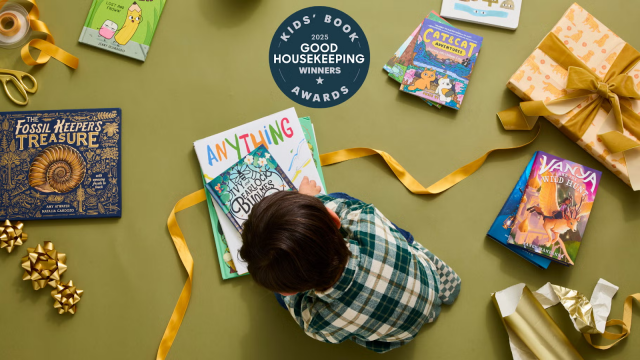The Superpower of Speaking Many Tongues: Why Multilingual Kids Rule the World
- February 17, 2025
- By Ryan Harris
Imagine you’re at a bustling international food festival. The air is filled with the aroma of sizzling tacos, steaming dumplings, and freshly baked croissants.
Kids are running around, laughing, and chatting with each other. But here’s the twist: some of them are switching effortlessly between languages, ordering gelato in Italian, asking for directions in Mandarin, and cracking jokes in Spanish.
Sounds like a scene from a superhero movie, right? Well, in a way, it is. These kids are flexing a real-life superpower: multilingualism.
Speaking more than one language isn’t just about showing off at food festivals (though that’s definitely a perk). It’s about unlocking a whole world of foreign cultures, opportunities, connections, and brain-boosting benefits.
Multilingual kids aren’t just cool—they’re shaping up to rule the world. Let’s dive into why that’s the case and how speaking many tongues gives them an edge.

The Brain Gym: How Multilingualism Boosts Brainpower
Think of the brain as a muscle. The more you exercise it, the stronger it gets. Now, imagine learning and using multiple languages as the ultimate brain workout. Every time a multilingual kid switches from one language to another, their brain is doing mental gymnastics. This constant exercise strengthens their cognitive abilities, making them better at problem-solving, multitasking, and even remembering where they left their homework.
Studies have shown that multilingual kids often outperform their monolingual peers in tasks that require focus and attention. Why? Because their brains are used to juggling different languages, which means they’re pros at filtering out distractions and focusing on what’s important. It’s like having a built-in mental filter that helps them stay sharp and on top of their game.
But wait, there’s more. Multilingualism also enhances creativity. When you know multiple languages, you have access to different ways of thinking and expressing ideas. For example, some languages have words for concepts that don’t even exist in others. This linguistic diversity helps kids think outside the box and come up with innovative solutions to problems. In a world that’s constantly changing, creativity is a superpower that can’t be underestimated.
Cultural Connectors: Building Bridges Across Borders
Language isn’t just about words—it’s about culture, history, and identity. When kids learn a new language, they’re not just memorizing vocabulary; they’re opening a door to a whole new world. They gain a deeper understanding of different cultures, traditions, and perspectives. This makes them more empathetic and open-minded, qualities that are essential in today’s interconnected world.
Imagine a kid who speaks English, Spanish, and Arabic. They can connect with people from three vastly different parts of the world, understand their stories, and share their own. This ability to bridge cultural gaps is invaluable, especially in a world where collaboration and communication are key to solving global challenges like climate change, poverty, and inequality.
Multilingual kids are also natural diplomats, both literally and figuratively. They’re skilled at navigating different social situations and finding common ground with people from diverse backgrounds. Whether it’s making friends at an international school or working on a group project with classmates from different countries, multilingual kids have a unique ability to bring people together.
Future-Proofing Their Careers
Let’s fast-forward a few years. The world is more globalized than ever, and businesses are looking for employees who can communicate with clients, partners, and colleagues from around the world. Guess who’s at the top of their hiring list? Multilingual candidates.
Knowing multiple languages isn’t just a nice-to-have skill—it’s a game-changer in the job market. Whether it’s in tech, healthcare, education, or entertainment, multilingualism opens doors to exciting career opportunities. For example, a bilingual engineer might work on international projects, a multilingual doctor could provide care to patients from diverse backgrounds, or a polyglot filmmaker might create movies that resonate with global audiences.
Don’t even get us started about developers—after all, human languages aren’t that different from programming ones. A multilingual dev will not only learn new programming languages faster but also be able to use tech like optical character recognition (OCR) more effectively.
And in a world where migration, different geopolitical events and market changes dictate hotspots for certain industries, multilingual kids of today will be the successful digital nomads of tomorrow.
The Confidence Boost
Learning a new language isn’t easy. It takes time, effort, and a lot of practice. But when kids finally master a new language, the sense of accomplishment is incredible. This boosts their confidence and self-esteem, showing them that they’re capable of tackling difficult challenges.
Multilingual kids also tend to be more adventurous and curious. Again, the combination of language skills and other abilities shines in full effect here. If they want to be software developers, they will have to use different languages to present their products and ideas to stakeholders in different regions. That would put them at an advantage over devs who can only work in the Anglosphere, right? Absolutely.
Whether it’s traveling to a foreign country, trying a new sport, or learning a musical instrument, they approach life with a can-do attitude. This confidence and curiosity serve them well in all areas of life, from academics to personal relationships. What’s learning a language if not learning to be comfortable with failure?
To make things even more interesting, studies indicate that people with higher self-confidence gravitate towards particular languages. The cultural impact is, once again, undeniable here.
How to Nurture the Superpower
So, how can parents and educators help kids unlock this superpower? The good news is that it’s never too early—or too late—to start. Here are a few tips:
- Start early: Young children’s brains are like sponges, soaking up new information quickly. Introducing them to multiple languages at a young age gives them a head start.
- Make it fun: Learning a language doesn’t have to be boring. Use games, songs, and stories; start with Ancient Egyptian if you have to. For example, watch cartoons in different languages or cook a meal from another culture while practicing the language.
- Practice, practice, practice: Consistency is key. Encourage kids to practice their language skills regularly, whether it’s through conversations, reading, or writing.
- Celebrate progress: Learning a new language is a journey, and every step counts. Celebrate small victories, like mastering a new word or having a conversation in another language.
- Connect with native speakers: If possible, expose kids to native speakers of the language they’re learning. This could be through language classes, cultural events, or even online platforms.
Conclusion
Multilingual kids don’t just see the world as it is—they see it as it could be. They’re not limited by borders or language barriers. Instead, they see endless possibilities for connection, collaboration, and growth. Whether it’s through their enhanced brainpower, cultural understanding, or career opportunities, multilingual kids are poised to make a big impact on the world.
So, the next time you hear a kid effortlessly switching between languages, remember: you’re witnessing a superpower in action. These kids aren’t just speaking many tongues—they’re shaping the future. And who knows? Maybe one day, they’ll be the ones solving the world’s biggest challenges, one conversation at a time. Now, that’s a superpower worth celebrating.
More from the blog

Kids Discover Talks with Book Editor Karen Cicero about Good Housekeeping’s 2025 Kids’ Book Awards
- December 22, 2025

Kids Discover Talks with Television Lighting Designer Christopher Landy About the Rockefeller Center Christmas Tree Lighting
- December 9, 2025

It’s the Most Wonderful Time of the Year… For Community Service Projects!
- December 8, 2025